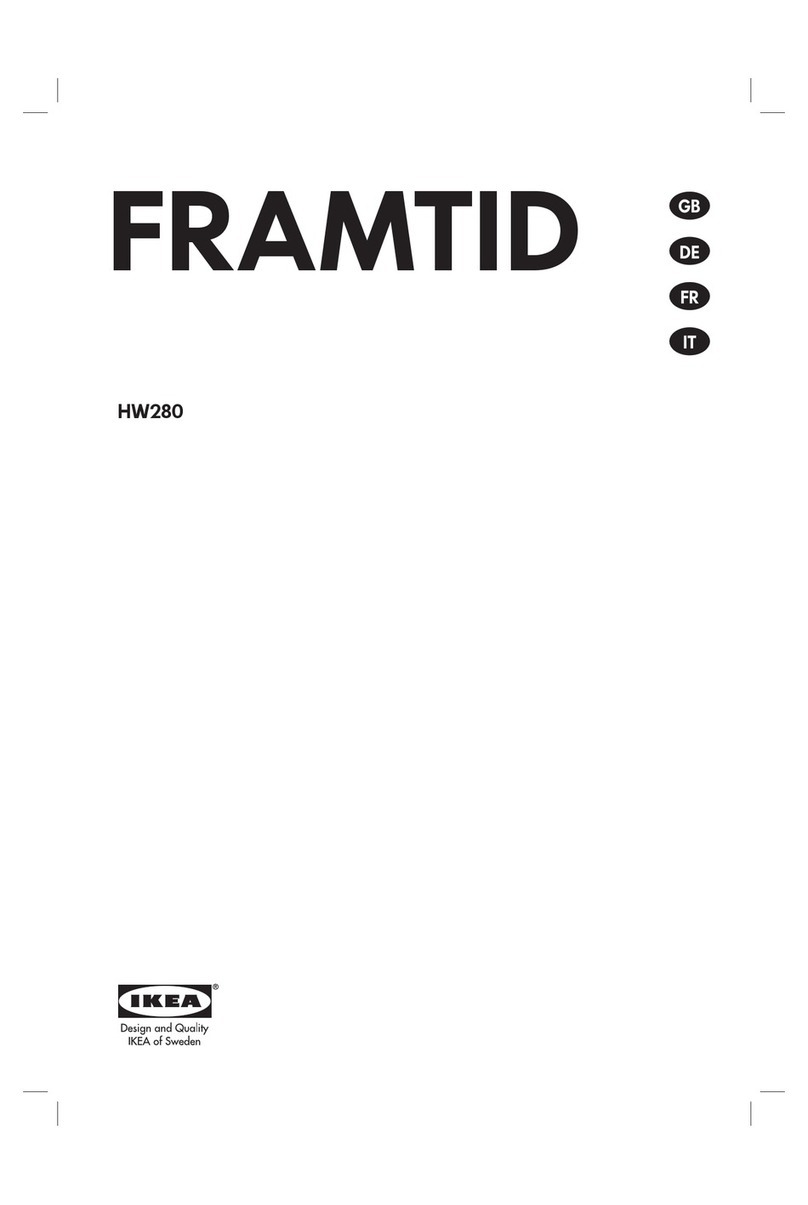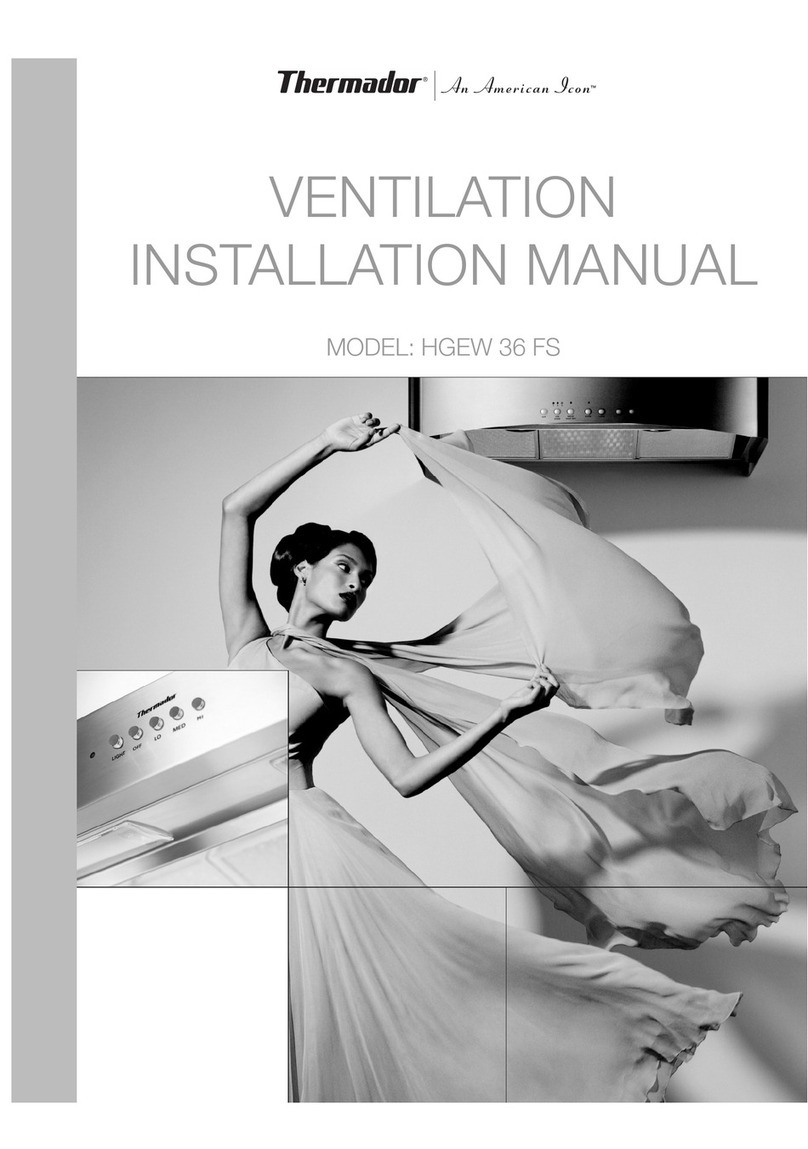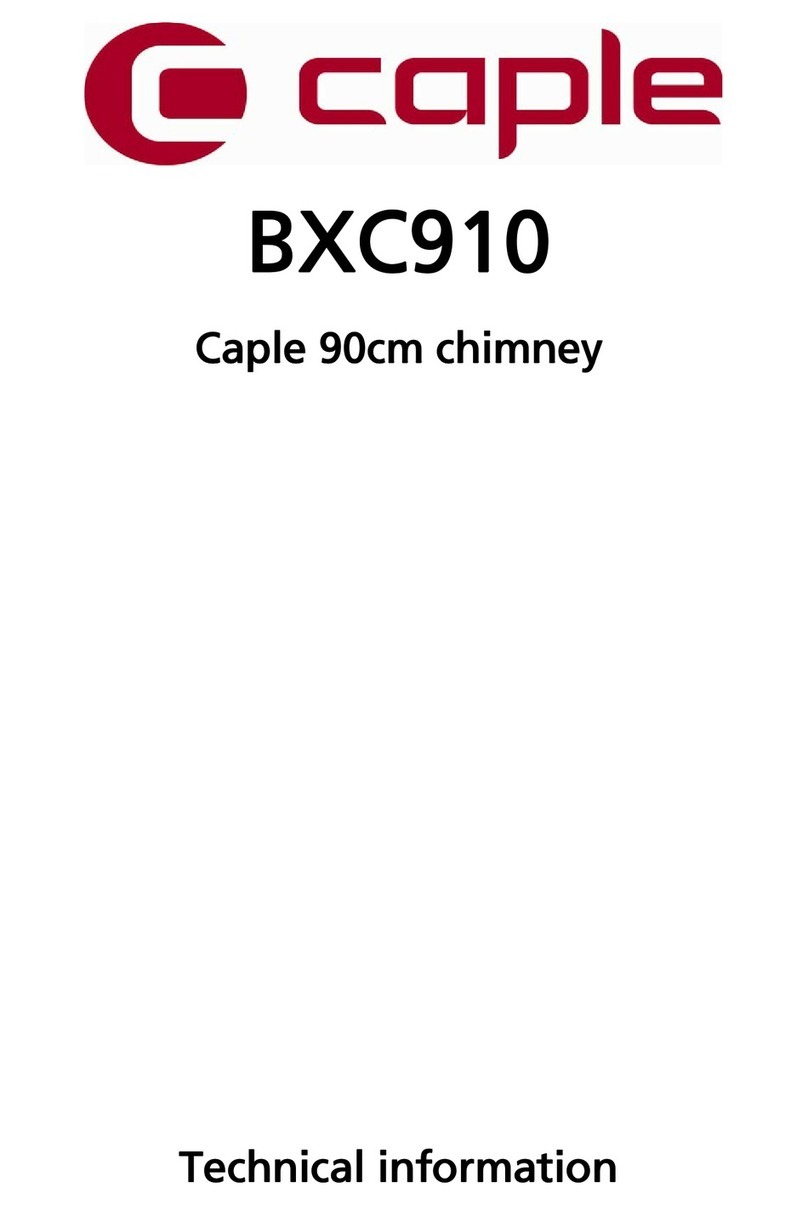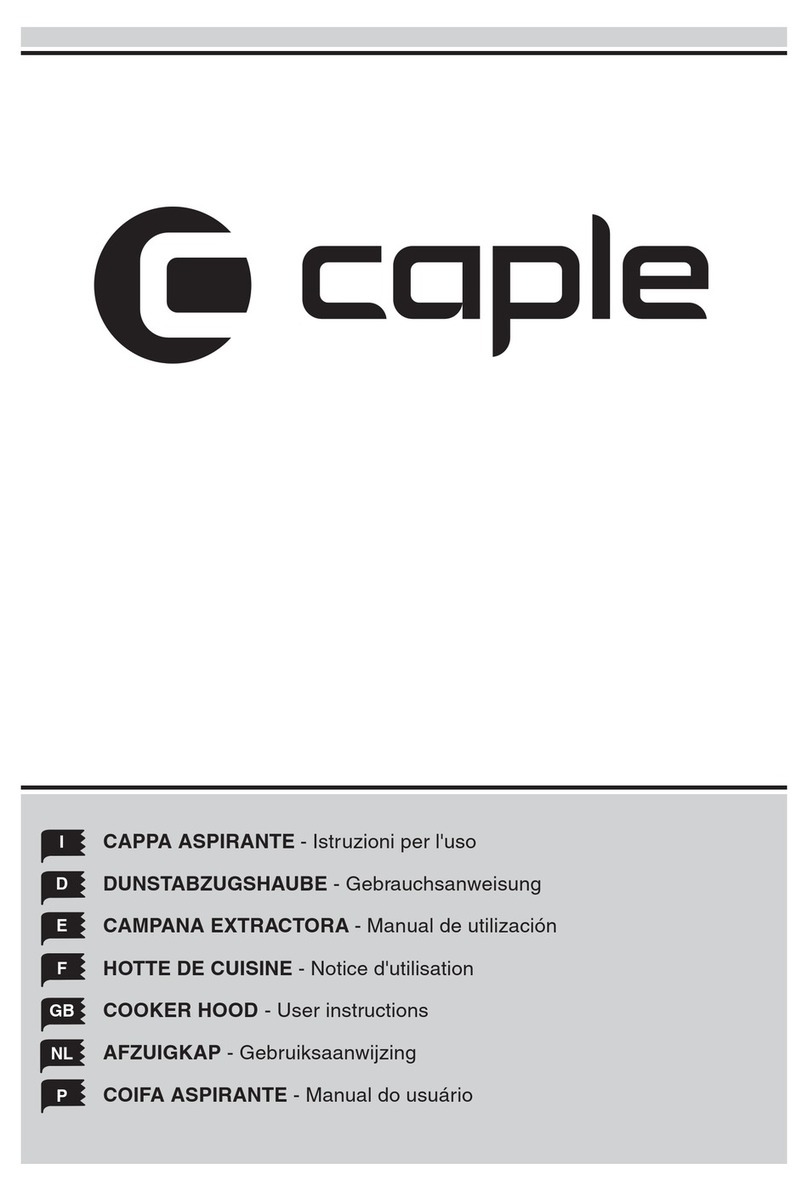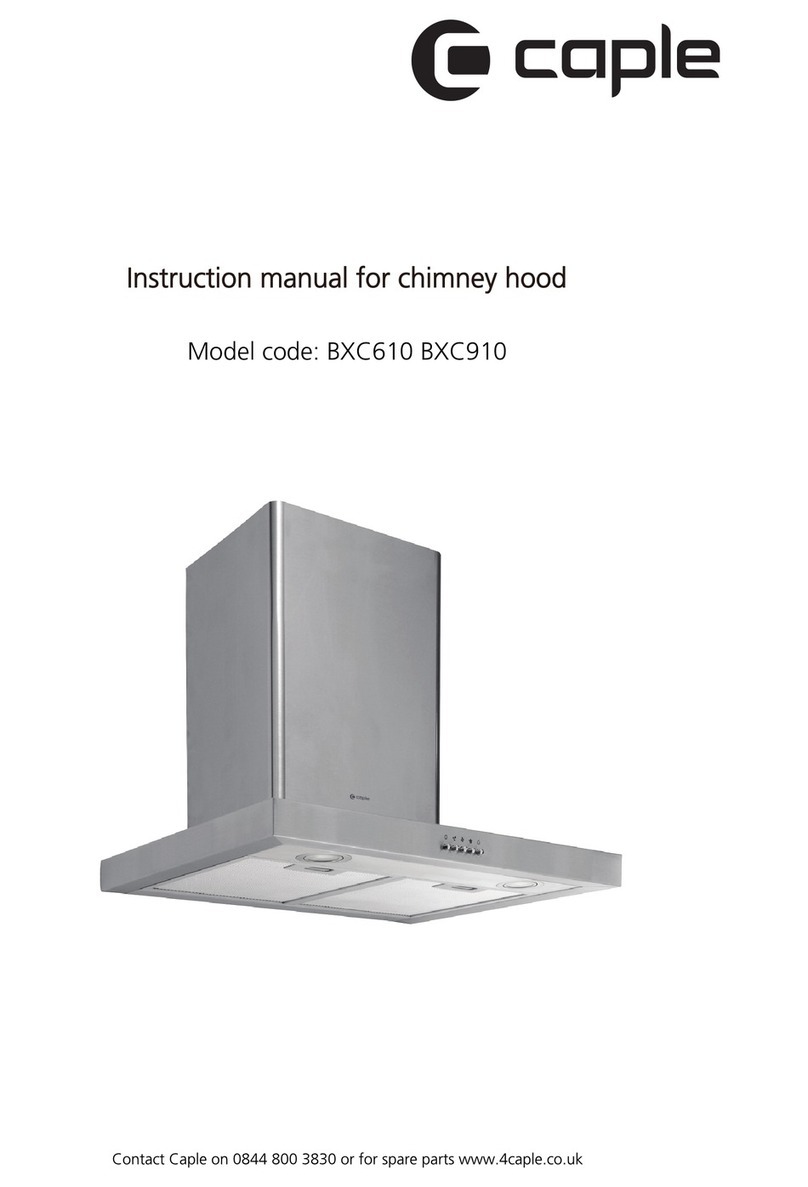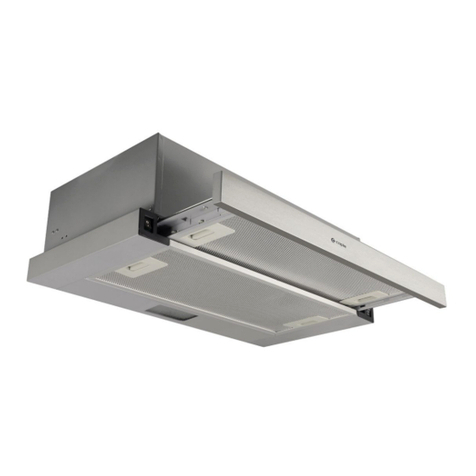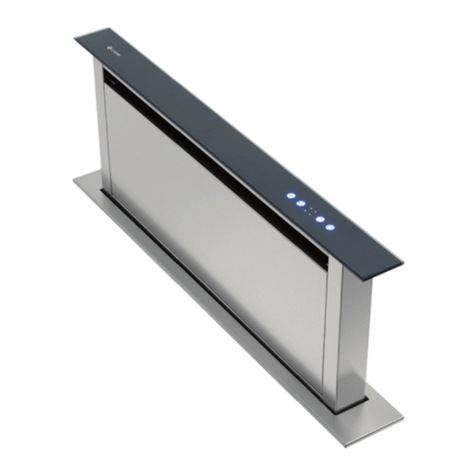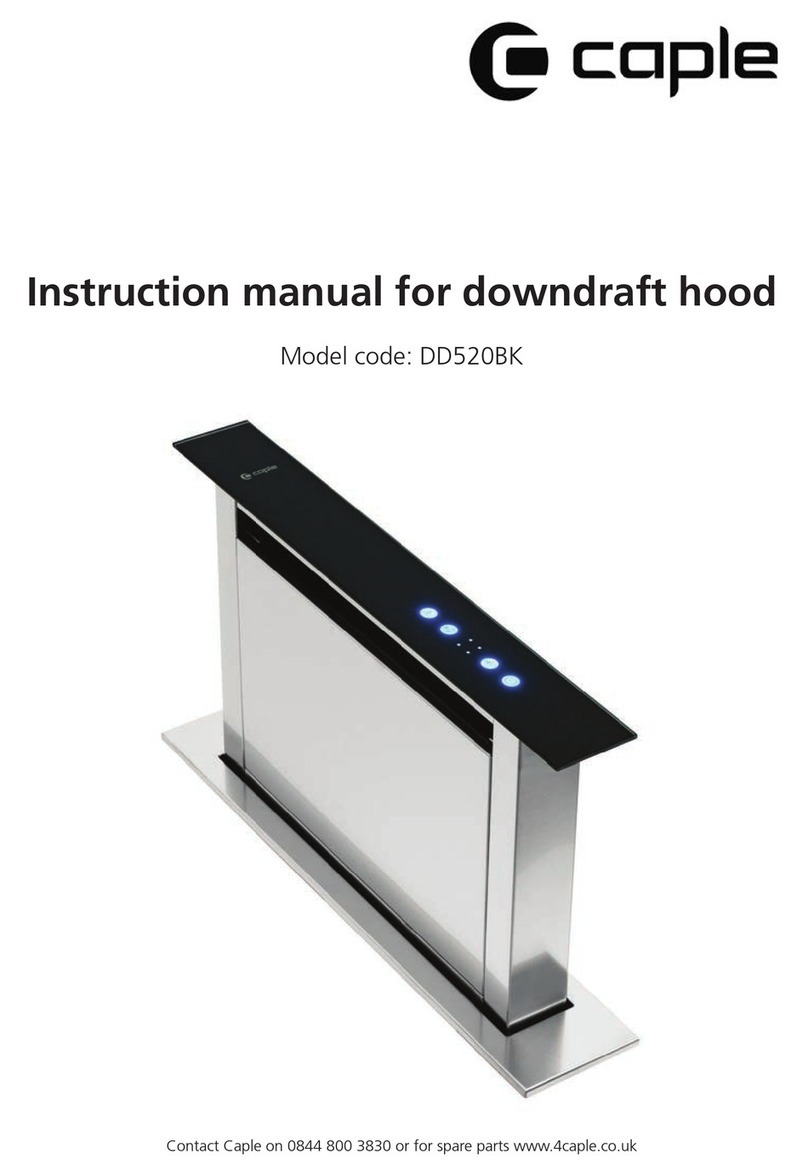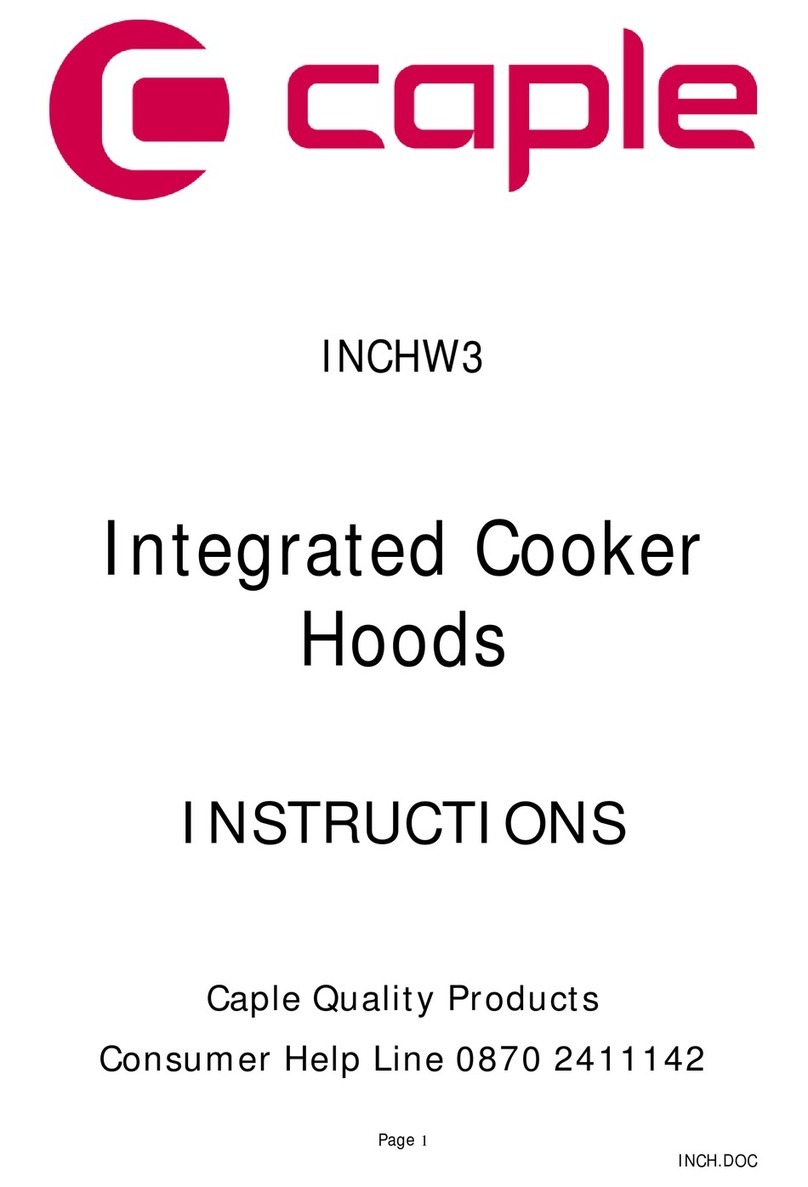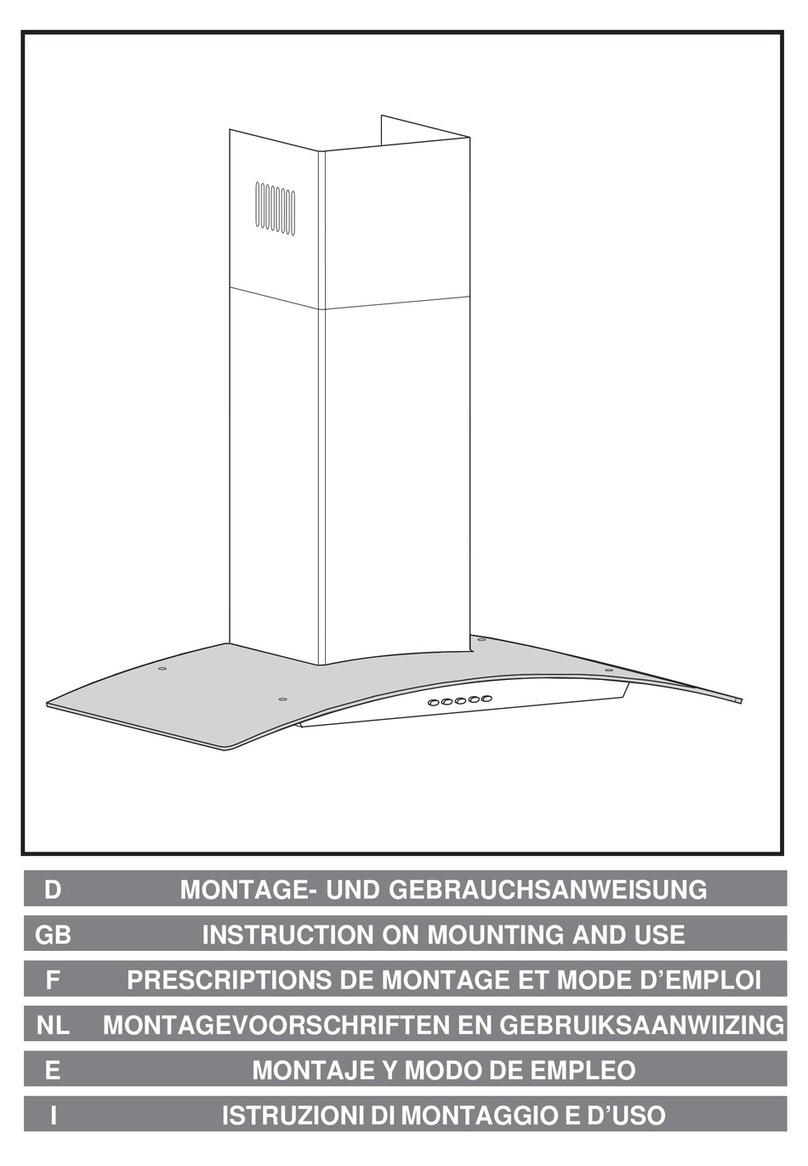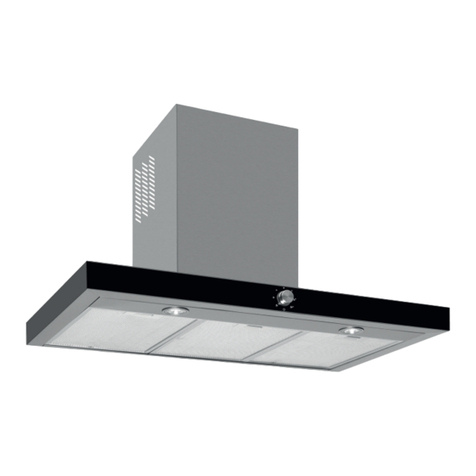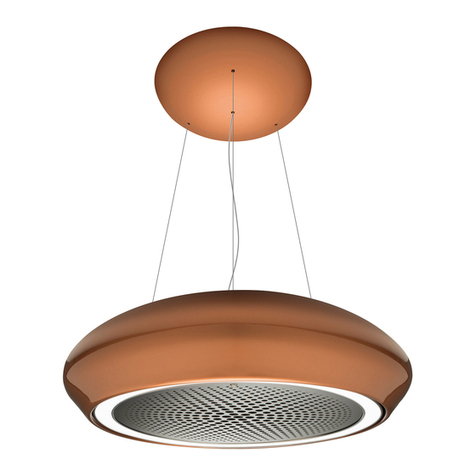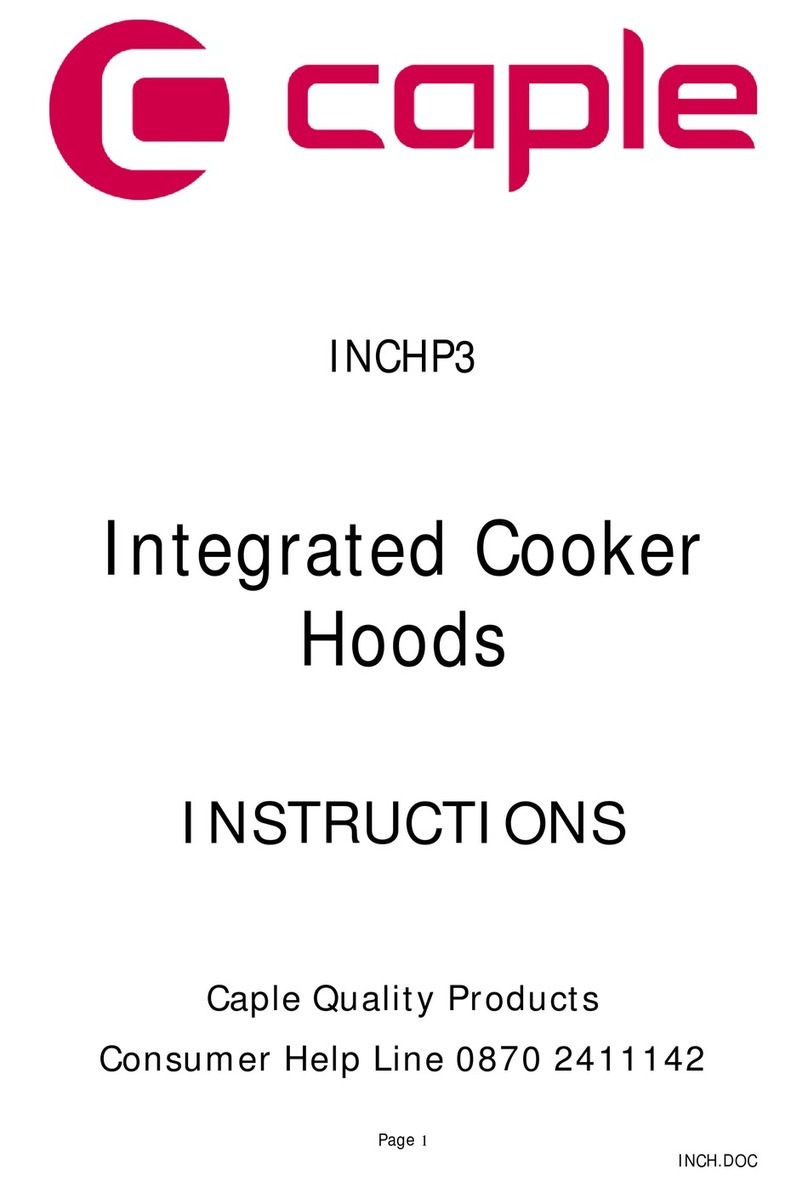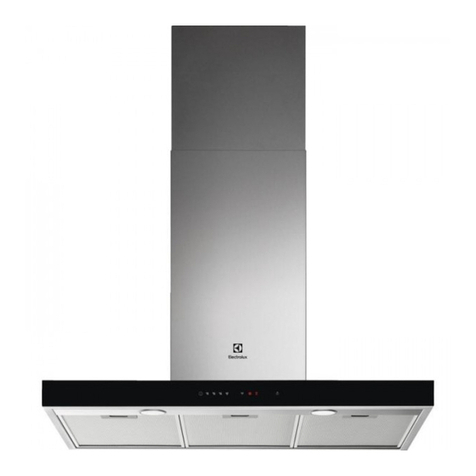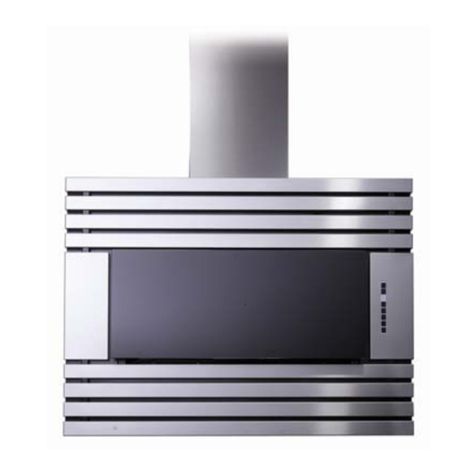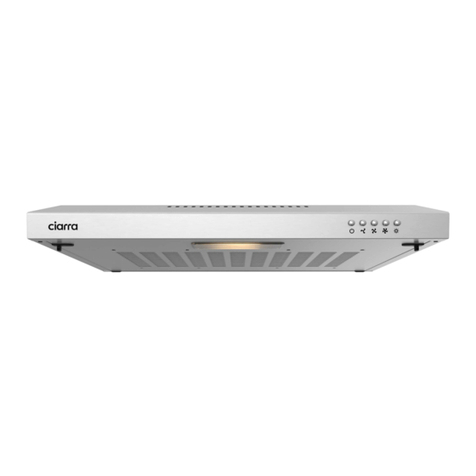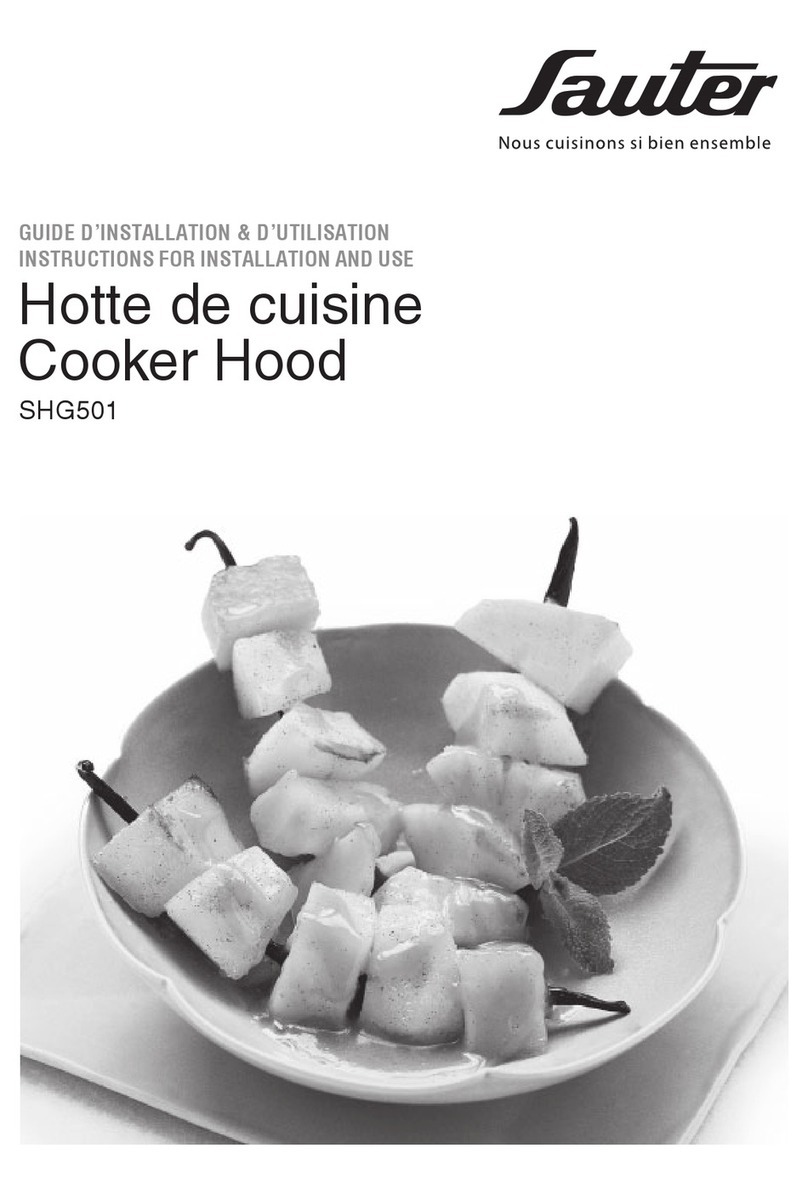13
Consult the designs in the front pages referenced in the text
by alphabet letters. Closely follow the instructions set
out in this manual. All responsibility, for any eventual
inconveniences, damages or fires caused by not complying
with the instructions in this manual, is declined.
The cooker hood must be placed at a minimum distance of
50 cm from the cooking plane for electric cookers and 65cm
for gas or mixed cookers.The hood can be installed above
these heights but for optimum performance it should be
installed at the distance quoted for the appropriate heat
source.
The hood is equipped with a top air outlet B for discharge
of fumes to the outside (Ducting version exhaust pipe
and pipe fixing clamps not provided).
Should it not be possible to discharge cooking fumes and
vapour to the outside, the hood can be used in the filter
version, fitting an activated carbon filter and the deflector F
on the support (bracket) G, fumes and vapours are
recycled through the top grille H by means of an exhaust
pipe connected to the top air outlet B and the connection
ring mounted on the deflector F (exhaust pipe and pipe
fixing clamps not provided).
The models with no suction motor only operate in ducting
mode, and must be connected to an external suction device
(not supplied).
Expansion wall plugs are provided to secure the hood to
most types of walls/ceilings. However, a qualified technician
must verify suitability of the materials in accordance with the
type of wall/ceiling. The wall/ceiling must be strong enough
to take the weight of the hood.
Installation
Preliminary information for installation of the hood:
Disconnect the hood during electrical connection, by turning
the home mains switch off.
Remove the fat/s filter/s and the carbon filter frame.
Do not tile, grout or silicone this appliance to the wall. Surface
mounting only. Do not fix chimney flue to furniture or fly over
shelves unless the chimney flue can be easily removed,
in case maintenance is ever required.
Assembling the chimney flue support/bracket (3
parts):
The three parts should be fixed with 4 screws, the support
extension is adjustable and should correspond to the internal
width of the telescopic chimney flue.
Assembling the deflector (only when a deflector
composed of 3 parts is supplied the deflector should
be only for the filter version):
The three parts should be fixed with 2 screws, the deflector
extension is adjustable and should correspond to the width
of the chimney flue support, to which it is then fixed.
==
X
X
H
=
=
X
F
F
G
G
Only for the models illustrated in Fig. 1D/8D 1E/8E
1Q/8Q
Remove AND CONSERVE the screws that temporarily
fix the flue units (for reasons of transport), the hood
or the flue unit (on the basis of the model possessed)
with the suction unit. The two parts should be
disassembled to facilitate installation. Check how the parts
are fixed together to repeat assemblage at the opportune
moment.
Before fixing the hood to the suction unit check that the metal
band (steam shield) that holds the lamp and the filter/s /
greases is well attached to the front. If necessary adjust the
position ofthe band forwards until the end stop.
Attention!
The chimney is predisposed for installation of the filter
Version.
In certain models where it is required to use the cooker hood
in the suction version then it is possible to overturn the upper
section of the chimney
and insert it inside the lower section of the chimney so that
the air-exit perforations are not visible. The chimneys in
which this operation is possible are recognizable by their
bracket fixing points G which are repeated also in the lower
side of the upper section of the chimney (see installation
sequence 20a-20b).
Attention! for all pre-assembled models:
the mounting operations 1, 2, 3 should not be taken into
consideration, for installation begin at operation 4.
1. Rest the suction unit on a flat surface and thread the lower
part of the hood onto it (Fig. 1C/8C 1D/8D 1I/8I 1E/
8E 1F/8F 1G/8G 1H/8H 1R/8R 1N 1O 1P 1S).
2. Make all the electrical connections between the two parts
(Fig. 9).
3. Permanently fix the cooker hood to the suction group with
the screws (consult the figure corresponding to the model
in possession)(Fig. 1C/8C 1D/8D 1I/8I 1E/8E 1F/
8F 1G/8G 1H/8H 1R/8R 1N 1O 1P 1S).
4. Using a pencil, draw a line on the wall, extending up to
the ceiling, to mark the centre. This will facilitate
installation (Fig. 10).
5. Rest the drilling template against the wall: the vertical
centre line printed on the drilling template must correspond
to the centre line drawn on the wall, and the bottom edge
of the drilling template must correspond to the bottom
edge of the hood: bear in mind that, when installation is
complete, the underside of the hood must be at least 50
cm above the cooker top in the case of electric cookers,
and at least 65 cm above the cooker top in the case of
gas or mixed cookers.
6. Place the lower support bracket on the perforation
diagram making it coincide with the traced triangle, mark
the two external holes and perforate. Remove the
perforation diagram, insert two wall-dowels and fix the
support bracket of the hood with two 5x45 mm screws
(Fig. 10).
Attention: only the models illustrated in Fig. 1Q/
10Q:
Fix the central bracket with two screws and wall-dowels
above the lower bracket (see perforation diagram for
positioning the holes).
7. Hang the hood onto the lower bracket.




